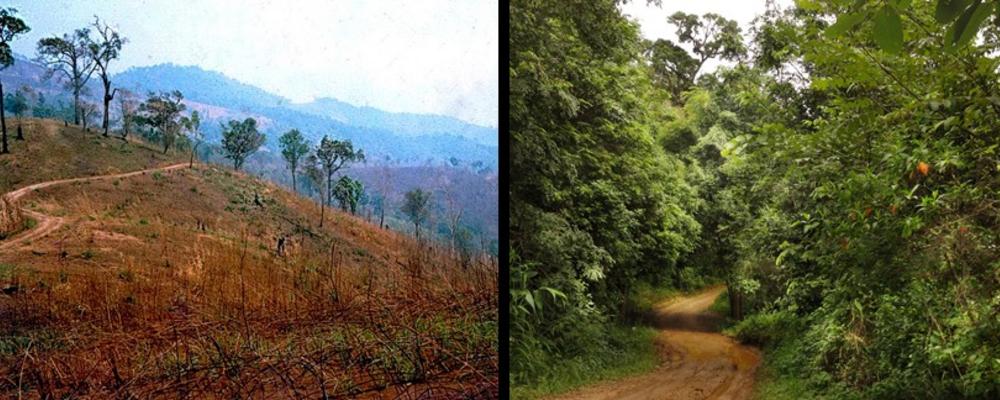“Forests are crucial for life on Earth; 75 per cent of the planet’s plants and animals live there. The forests provide us with wood, food, fuel and medicines, and they are incredibly important for our wellbeing,” says Alexandre Antonelli, professor of biodiversity at the University of Gothenburg and the Gothenburg Global Biodiversity Centre and director of science at Kew Gardens in the United Kingdom.
He is senior author for the new study Ten golden rules for reforestation, by researchers from the Royal Botanic Gardens, Kew (RBG Kew) and Botanic Gardens Conservation International (BGCI).
Protect existing forest first and emphasize the role of local communities
The loss of natural forests continues relentlessly, despite global efforts to stop it.
“Forests are disappearing at an alarming rate; each year we loose an area of tropical rainforests as large as Lapland,” says Alexandre Antonelli.
But large-scale tree planting is not the best solution, according to the researchers. First, existing forest must be protected to preserve the forest areas’ biodiversity and ecological functionality. These existing forests are also important as carbon sinks, since they store large amounts of carbon dioxide.
When restoring degraded forests, it is also necessary to involve the local community from the planning stage through to delivery and management. Previous studies show that a lack of local community involvement is one of the most commonly cited causes of failure for forest projects.
“Examples of positive outcomes exist, like in eastern Madagascar, where the local community has worked together to restore areas degraded by fire and over-exploitation” says Alexandre Antonelli.
Restore forests and choose the appropriate areas for reforestation
It is better to restore degraded forest lands rather than plant previously non-forested lands, according to the researchers. And when replanting is the only way forward, it is important to choose the appropriate land.
It is not a good approach to use natural grasslands, savannas or non-forested wetlands, which have their own ecosystems that contribute significantly to carbon capture.
Support natural forests
Carbon capture in naturally regenerated areas is potentially 40 times greater than in plantations and species richness is generally higher. When natural reforestation is not possible, however, and planting trees is necessary, it is important to choose the right trees, according to the authors.
The researchers recommend planting a mixture of species. Preferably, choose those typical for the local natural forest ecosystem, but also rare and endangers species to create a rich and diverse ecosystem.
It is important to avoid exotic species that can become invasive, particularly in tropical areas. Invasive species are an important driver of the current global biodiversity crisis.
There are good examples
A good example where the right trees were picked to achieve a restored forest with mutualistic interactions is in Lampang Province in northern Thailand. The previously forested site was degraded through limestone mining. After spreading 60 cm of topsoil, they planted 14 different native tree species including several species of figs, and legumes to improve the soil conditions. By the end of the third rainy season, canopy closure had been achieved and macaque monkeys started visiting the plot to eat the fig fruits, naturally dispersing the seeds of other species through defecation. Overall, the trees had an average annual growth rate of 91 percentages. [ALP1]
“It is wonderful that thousands of people and companies plant trees. We aren’t saying that planting trees is wrong. It’s a great solution to deal with global warming and protecting biodiversity when done correctly and effectively. But we want to challenge the ideas of how we currently plant trees so that we can maximize the positive effects and embark on a new era for the world’s forests that benefits everyone. And when there is a choice, we emphasize stopping deforestation and protecting existing forests. The best planning decisions are when scientific knowledge is combined with local knowledge,” says Alexandre Antonelli.
Contact:
Alexandre Antonelli, professor at the Department of Biological and Environmental Sciences, +46 (0)31-786 25 57, +46 (0)703-98 95 70, alexandre.antonelli@bioenv.gu.se a.antonelli@kew.org; +44 7384 877664
Heather McLeod, Senior Press Officer, the Royal Botanic Gardens, Kew on pr@kew.org / h.mcleod@kew.org / +44 20 8332 3703/ 07464 938860
